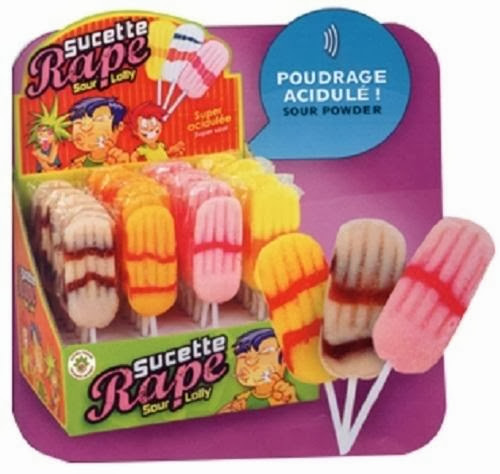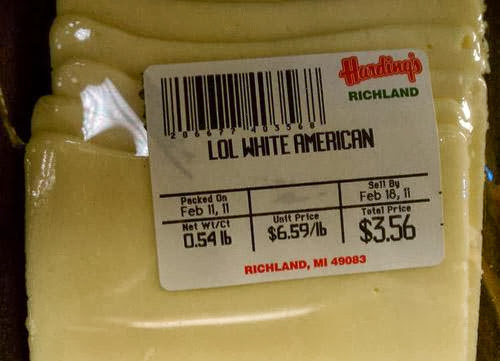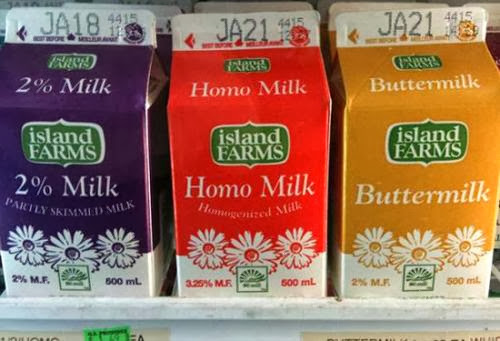Many years ago, there was a radio station in Seattle, Washington called KRAB.
Was KRAB pop? Absolutely not. Was it culture? More than you could shake a tub of yogurt at.
KRAB was founded in 1962 by Lorenzo Milam who is considered a pioneer in the community radio movement. KRAB's format has been described as "Eclectic", "free-form" or as I called it, "Whatever". But little did anyone know that KRAB and it's programming model would serve as the launch pad of hundreds of community public radio stations across America.
It was licensed to The Jack Straw Memorial Foundation.
Who was Jack Straw?
Here's the answer:
"The name Jack Straw has several appeals
for us. Naturally, we delight in the obscurity of it. It refers to a
trouble-making peasant type who, in 1381, led a riot against the Flemish
inhabitants of London for nothing less mundane than economic reasons,
but better, is associated in Chaucer with the absolute confusion and
demi-philosophical statements of Chanticleer and Dame Pertelote under
attack of the ‘povre wydwe, somdeel stape in age.’ Figure that one out.
Jack Straw bodes well for KRAB, with outside help we may be able
to escape the inordinate confusion of our farmyard studios. We are
sometimes revolted by our poverty and dream – as we have said – of
glistening studios with miracle equipment and a transmitter lost
somewhere in the clouds of faultless transmission and wild improbable
plans. We will refuse, of course, adamantly, to give up the confusion of
our quasi-philosophical stance– that it the nature of KRAB and Dame
Pertelote."
~
The Radio Papers: From KRAB to KCHU by Lorenzo Milam
Excerpt of Chaucer’s The Nun’s Priest’s Tale
So hydous was the noyse, a benedicitee!
Certes, he Jakke Straw and his meynee
Ne made nevere shoutes half so shrille
Whan that they wolden any Flemyng kille,
As thilke day was madde upon the fox.
Of bras they broghten bemes, and of box,
Of horn, of boon, in whiche they blewe and powped,
And therwithal they skriked and they howped,
It semed as they hevene sholde falle.
Modern English Translation
So terrible was the noise, ah ben'cite!
Certainly old Jack Straw and his army
Never raised shouting half so loud and shrill
When they were chasing Flemings for to kill,
As on that day was raised upon the fox.
They brought forth trumpets made of brass, of box,
Of horn, of bone, wherein they blew and pooped,
And therewithal they screamed and shrieked and whooped;
It seemed as if the heaven itself should fall!
(from http://www.jackstraw.org/main/about/jack.shtml)
 |
| No comment. |
Milam's plan for KRAB was influenced by the BBC and classic American radio. Which didn't have specific formats, but a wide range of programming each day.
KRAB wasn't your typical radio station, with a directed format and narrowly researched playlist. KRAB was the antithesis of
all that. For example, while pop music and jingly commercials were the norm on the most listened to radio stations on a typical day in the '60s and '70s. KRAB would broadcast an intellectual roundtable, indigenous music from Africa, a reading from a 14th century book, gramophone records from the 1920s. And so forth.
KRAB was staffed by volunteers and encouraged an eclectic direction. To find what
isn't mainstream. Milam's vision wasn't to compete with existing stations, but to offer something that you couldn't find on them. Their studio and transmitter were originally located in a converted donut shop in the Roosevelt area of Seattle.
And KRAB had a lot to offer. Before world music and LGBT themed radio programs became a staple of community public radio, KRAB
innovated them. Public radio back then (as a majority of FM radio stations in general) were mostly classical music. KRAB also had classical music, but from far more obscure composers. No Beethoven here. You were more likely to hear Renaissance Fair music (LONG before Renaissance Fairs became trendy.) KRAB also played blues music (at a time and place where the blues were virtually unheard of.) There was obscure folk, avant garde experimental music as well as BBC News (directly off a shortwave radio!), commentary, speeches and roundtable discussions from a wide range of opinions. Today, you'd have to be out of your mind to put a flaming Communist and a John Birch uber right-winger on the same station, to say nothing of
the same room. KRAB did. (And how the whole damn station didn't blow up is one for the history books.)
Before the internet, it was almost impossible to find such a huge variety of alternative programming in most cities. That's what made KRAB such a gem. The Jack Straw Memorial Foundation also founded other stations with similar programming KBOO 90.7 FM Portland, OR, KNON Dallas, TX, KPOO San Fransisco, CA and others.
They had no ratings, no advertisers (being a non-commercially licensed station, they couldn't have
any advertising whatsoever on the air.) And outside local media and intellectual circles, almost
nobody knew
where they were. They were located at 107.7 MHz on the farthest reach of the Seattle FM dial.
It's dial position was a boon and a curse. Back then, the most popular Seattle FM stations were located further down the dial (mostly between 92-103 FM. And farther up were a religious and lower power stations in the Seattle suburbs and stations farther off in the hinterlands, such as Bellingham.) So unless the listener was
really looking for something off the beaten path, there was no accidental stumbling upon KRAB. But being out of the way of everyone else was KRAB's stock and trade anyway.
It was a pretty highbrow station.
 |
| Perhaps too highbrow? |
Whereas most stations look for mass appeal, Or specialized in one particular genre of music. KRAB's listener was the one who didn't fit in
anywhere. There was no format you could call it (even "eclectic" and "free-form" seemed inaccurate.) If it sounded even
remotely popular or even had a niche commercial appeal, it was not heard on KRAB.
But while KRAB was criticized by the local mainstream media and some Seattle radio listeners as a useless waste of bandwith, KRAB proudly let it's freak flag fly. They weren't there to impress
them.
Initially, KRAB avoided rock music, figuring you could hear that already on the underground FM rock stations of the late '60s and early '70s. But it quietly snuck itself in in the wee hours. Again, this wasn't the pop stuff you heard. KRAB also introduced Seattle to reggae, punk and even a new type of music called "rap" - all in the '70s.
Here's a sample of their punk rock show Life Elsewhere with Norman Batley from January 1982
KRAB trudged along, eeking by on government grants and donations from their few listeners. But in the early '80s the Reagan administration made devastating cutbacks in government funding for non-commercial radio. And with the loss of this, KRAB began to seriously struggle for it's life. However it was more than they could handle.
But KRAB had an ace up it's sleeve. They had one thing that was extremely valuable and that was it's frequency. The FM radio dial is divided in two sections. The frequencies from 88.1 to 91.9 are reserved in the US for non-commercial radio and those from 92.1 to 107.9 are available for commercial broadcasters. With 107.7 being in that commercial zone it could be sold to a commercial broadcaster, which would pay enough to give KRAB a new lease on life on a different frequency.
In 1984, KRAB sold the license to it's 107.7 frequency to Sunbelt Broadcasting for a little over $3,000,000. This money was used as seed money for starting a new radio station and a recording and production studio. They first tried to enter a time share agreement with Seattle's KNHC-FM, which balked at the proposal, considering it akin to a hostile takeover. They later found a frequency in nearby Everett, WA.
But after some years off the air, something else had to be sacrificed. Radio station call letters cannot be held as intellectual property if there's no radio station to use them. There was a time limit and that ended by 1986. The KRAB call letters were taken by a Bakersfield, CA rock station which still uses them
today.
So the new station in Everett became
KSER 90.7 FM. They are preparing to launch a second radio station, KXIR 89.9 FM.
 |
| And things are run slightly less haphazardly than it was at KRAB (Image from krab.fm) | | | |
The Jack Straw Memorial Foundation operated KSER for a few years during the '90s before turning the station over to The KSER Foundation. They are
Jack Straw Productions today and a major producer of independent media.
And what happened to KRAB's original 107.7 FM frequency?
After nearly a year off the air, 107.7 returned in 1985 as a light pop station called KMGI "Magic 108". After 6 years of floundering ratings in this format, the format was changed to alternative rock KNDD "107.7 The End" and instantly became a smashing success.
Audio of the KMGI to KNDD format change
The timing couldn't have been better. Nirvana was just a few weeks from releasing their
Nevermind album, launching the Seattle grunge rock sound that changed rock music in a way not seen since the British Invasion of the '60s and for the next few years, Seattle was the
de facto rock n' roll capitol of America. And KNDD was at it's epicenter and influencing countless other radio stations. They're
still on the air and still a major player in the alternative rock format, though not as epic as they were at their beginning. And even Norman Batley (as Norman B.) made a return to his old frequency (as afternoon host on The End) for a few years in the early '90s.
Seattle Radio History - 107.7FM (KNDD -The End) from Twisted Scholar on Vimeo.
However these days, a station like KRAB would be highly welcome today with many radio listeners. Because, let's face it, most people can only stand the same twenty squeaky, AutoTuned pop songs of today
ad nauseum for only so long.
If you want a closer look at KRAB and the history and sounds of this strange little radio station, check out
http://www.krab.fm/. It's a
goldmine and do read the program guides. They tell a LOT.

























sE9swm,1LCBQVQH6mru!~~60_57.JPG)




































